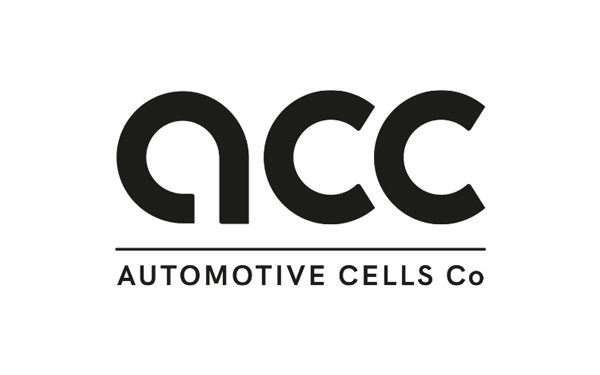Customer case: ACC.
Born in the 2020s, ACC thrives in the fast-paced, high-tech environment of the electric vehicle battery industry.
Their ambitions are strong:
- To be a center of excellence for high technology and innovation
- To be competitive, by producing batteries for electric vehicles that are more affordable than ever before
- To be cleaner and greener, acting in a sustainable, ethical and environmentally-friendly way
- Move as fast as the energy transition, while creating numerous job opportunities.
The ACC challenge.
What were your needs when you launched your project? What were or are your objectives?
The pillars of ACC’s ambition: to be an innovative, high-tech center of excellence, to be competitive and produce automotive batteries that are more affordable than ever, to act ethically and environmentally responsibly in its activities and supply chain, and to create highly skilled job opportunities.
ACC has embarked on a process of building and optimizing internal exchanges (between the Bruges and Nersac sites, the Gigafactories and advanced warehouses), with its customers, suppliers and logistics service providers.
In this context, ACC wanted to acquire an EDI platform in SaaS mode, and to be supported in its implementation.
How did you prepare this project internally?
We were accompanied by an AMOA for the preparation of this project. The selection of an EDI platform was carried out in four main phases.
It began with a kick-off meeting and the development of a macro-planning document, along with the organization of workshops.
A phase of analyzing the existing situation and co-constructing the target was then carried out, using interviews and workshops to gather requirements, list the constraints and EDI specifications of customers and suppliers, and then model the target processes.
On this basis, specifications were drawn up, including functional and technical requirements, project management procedures, as well as governance and cybersecurity aspects.
Finally, a consultation was launched with identified service providers, their bids were analyzed, and recommendations were formulated with a view to selecting the service provider.
Key figures
The need.
What types of partners did you want to exchange with?
ACC has a portfolio of 2 customers for whom it produces or will produce battery cells and modules for electric vehicles: Stellantis and Mercedes Benz Group.
By 2023, ACC had referenced and validated 27 suppliers:
- 5 international (and more specifically Asian);
- 22 based in Europe.
Of these 27 suppliers, 14 confirmed that they were using an EDI solution. 5 replied that they usually used WebEDI with other customers. 3 had never used either EDI or WebEDI. ACC had not yet received feedback from the other 5 at the time the specifications were drawn up.
The service provider therefore had to be familiar with and compatible with the regulatory, tax and technical specificities (time zones, special characters, etc.) of each country.
V
What documents did you want to exchange?
The documents “Forecast delivery”, “Delivery call”, “Dispatch advice” and “Invoice” were part of the initial scope.
For 2023, to simplify the calculations, the following volume assumptions were used:
- 1 message of each type per week with customers and suppliers;
- 4 customers and 27 suppliers.
An estimated total of 4 * (4 + 27) * 52 weeks = 6,500 messages exchanged.
The choice.
How did the selection of your future service provider went?
4 service providers were contacted before the specifications were sent out. The selection took place in two phases: analysis of the responses to the specifications, followed by a face-to-face presentation of their offer for negotiation.
The selection criteria were as follows:
- The quality of the response (understanding of needs, clarity of response, transparency of costs, proposed standards and methods, etc.);
- The quality and credibility of standard commitments (deadlines, availability, etc.);
- Demonstrated ability to support companies similar to ACC in outsourcing these services and the ability to support ACC (flexibility, etc.);
- The duration of the service provider’s commitment ;
- Pricing.
V
What motivated your choice of solution?
The first thing was the level of personalization of the response to our specifications. Then, mainly, the difference was made on :
Methodology and type of support offered
The TX2 reference number, which used the same ERP as ACC, QAD
The solution's level of cybersecurity
The quality of the exchanges between TX2’s technical teams and ACC’s SSI team convinced us.
Feedback.
ACC is a young company, created in 2020, and as such it is constantly evolving, and the EDI and Web EDI solution enables us to support this ongoing evolution.
TX2 CONCEPT was able to support ACC in this move towards maturity.
Setting up.
How did the implementation of the project go?
Given the context – a company under construction, IT tools in the process of being deployed, processes that evolve regularly – the majority of objectives were achieved.
The technical integration phase with QAD integrator Sopra was rapid. Web EDI commissioning and training, and supplier buy-in to the principle, was a success overall.
The future.
Do you have any future dematerialization projects?
Yes, ACC is part of the legislative framework for the gradual generalization of electronic invoicing (e-invoicing) and mandatory transmission of transaction and payment data (e-reporting) from September 1, 2026.
One word for our collaboration: Agility.

